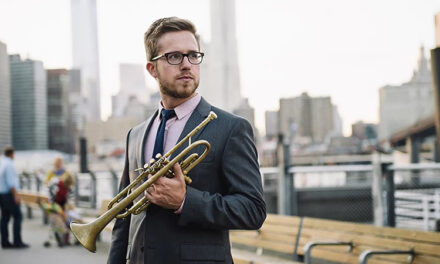 Celebrating Beethoven’s 250th birthday, the North Carolina Symphony continued its live-streaming series with a performance of Ludwig van Beethoven’s magnificent, sunny Septet in E-flat. Six of NC’s most fabulous musicians were joined by Grammy award-winning artist James Ehnes. The Canadian violinist last performed with the NC Symphony in February 2020 and,despite the pandemic, both Ehnes and the NCS have found new ways to overcome barriers and keep audiences engaged.
Celebrating Beethoven’s 250th birthday, the North Carolina Symphony continued its live-streaming series with a performance of Ludwig van Beethoven’s magnificent, sunny Septet in E-flat. Six of NC’s most fabulous musicians were joined by Grammy award-winning artist James Ehnes. The Canadian violinist last performed with the NC Symphony in February 2020 and,despite the pandemic, both Ehnes and the NCS have found new ways to overcome barriers and keep audiences engaged.
Coinciding with what would have been a “normal” fall start to the concert season, the NCS has begun offering state-of-the-art concert live streams, after spending the summer creating free Youtube series such as “From Our Homes to Yours,” “Meet the Instruments,” and “Together Through Music.” Meanwhile, Ehnes has produced a six-part “Recitals from Home” series throughout the summer and fall available for purchase on his website. This North Carolina performance was part of his recent “tour,” performing and recording orchestra performances live across the United States.
The NC Symphony is taking creative advantages of this new format. The digital concert program included hyperlinks wherever they were relevant, and the performance’s camera work featured several different angles, including closeups and split screens. Another added advantage, the concert was bookended by pre- and post-concert conversations with host Joseph Peters, Ehnes, and Bonnie Thron.
What better birthday music could there be than Beethoven’s optimistic, memorable tunes? With a dash of Haydn’s humor and “effortless lyricism” (in Ehnes’ words), the Septet’s overwhelming major tonality gives away the fact that this composition came about early in Beethoven’s career. The first movement, Adagio – Allegro con brio, begins languidly, with Ehnes’ violin melody punctuated by homophonic pulses. Soon after, the adagio dissipated into a cheerful allegro melody, while the musicians maintained the fluidity of the beginning. Movement 1 ends with a flourish and hardly a minor chord in sight.
The name Adagio cantabile for the Septet’s second movement is incredibly accurate – beginning with James Ehnes, each musician has a spotlit lyrical melody, backed with gentle dance-like accompaniment by the other six. It was wonderful to hear each artist individually, and Beethoven’s melodies highlighted the strengths of each player. The violin does have the most melodic volume here, but clarinetist Samuel Almaguer and bassoonist Aaron Apaza played gorgeously as well. Thron and Leonid Finkelshteyn filled the hall with melodies and bass notes alike. Christopher Caudill on the horn took the legato melody through its single brief minor cloud.
Classical piano students will have déjà-vu when hearing the third movement Minuetto – Beethoven reused one of the main motives from his Sonata No. 20 (known as one of Beethoven’s “easier” sonatas), composed a few years before the Septet. The simple melody, almost earworm-level catchy, was played with fresh aplomb by the NC Symphony’s musicians. The brief minuet is followed by a theme and variations for the fourth movement, and here violist Samuel Gold was showcased along with a charming duet between woodwinds.
Perhaps the most delightful movement is Beethoven’s Scherzo, where changing textures showcased not only individual virtuosity but also the seven artists’ expert synchronicity (despite masks and added physical distance). The finale’s increased seriousness at times somehow makes it even more uplifting. Add in Ehnes’ extraordinary cadenzas, and the result was a lighthearted, breathless romp to a joyful end.












